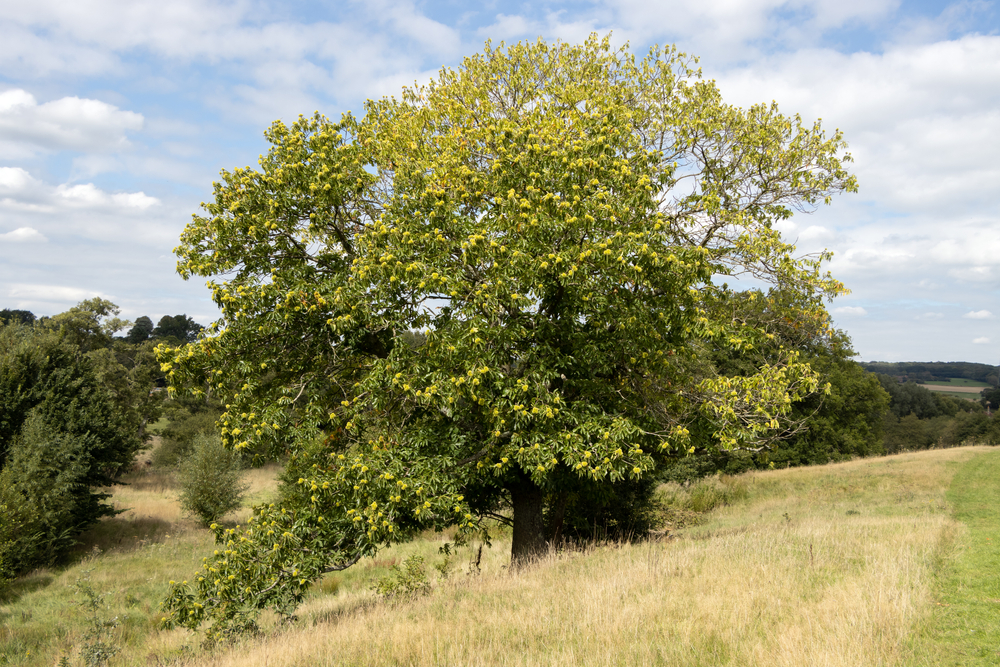
Chestnut tree - © Philip Bird LRPS CPAGB/Shutterstock
A few years ago, a pest disease of chestnut trees began to spread along the border region between Bosnia and Herzegovina and Croatia. The response given through the "Chestnut" project has shown that a cross-border approach to solving common problems is needed
The European chestnut is a deciduous tree of the Fagaceae family, like beeches and oaks, widely found in various areas of southern Europe, including Croatia and Bosnia and Herzegovina.
Right here, in 2015, the chestnut gall wasp made its appearance, spreading rapidly among the chestnut groves of the border region between the Bosnian canton of Una-Sana and the Croatian region of Karlovac. It is a pest that causes a rapid deterioration of the attacked plants, a drastic drop in fruiting and, in the most serious cases, the death of the tree.
To tackle it, the "Chestnut " project was launched in 2017, co-financed by the EU under the INTERREG program, with just under 590,000 Euros.
The dual objective of the project, led by the Bosnian municipality of Velika Kladusa, was to protect the plant from the hymenoptera, which is immune to common insecticides, and the reforestation of various areas afflicted by the plague. For this reason, in addition to the prevention and reduction of the spread, important experimental research was initiated concerning the use of natural antagonists to the chestnut wasp, such as the parasitoid insect Torymus sinensis Kamijo.
The creation of a common database proved to be fundamental to study the progress of the infestation, to elaborate an adequate response, and to monitor its evolution. The sharing of knowledge between Croatia and Bosnia and Herzegovina was also of vital importance – it was made possible, specifically, by the involvement in the project of the Centre for Plums and Chestnuts based in Petrinja, a city in Croatia, and its Bosnian counterpart, the Agricultural Institute of the canton of Una-Sana (which is home to 90% of all chestnut forests in Bosnia and Herzegovina).
Among the other entities involved, the municipalities of Buzim, Vojni, and the city of Karlovac stand out. The latter, in particular, boasts the presence of centuries-old chestnut trees, which have been seriously endangered by the pest. In response to this emergency, the partner institution has planted new chestnut trees, thus preventing their disappearance from the city centre.
Alongside the reforestation activities of the areas traditionally hosting the chestnut groves, the agricultural land has been expanded with the optimal characteristics for the growth of this tree. By resorting to modern agro-technical measures and the provision of a special irrigation system, it was possible to increase the area used for this type of cultivation.
The interventions were managed by about forty farmers from Bosnia and Croatia, who thus became aware of new techniques to preserve and increase the yield of the land intended for chestnut.
The project also included a cycle of four conferences and various awareness-raising activities aimed at recognising and protecting the natural and economic potential of the chestnut groves in the region, an important source of income for several families.
This content is published in the context of the "Work4Future" project co-financed by the European Union (EU). The EU is in no way responsible for the information or views expressed within the framework of the project. The responsibility for the contents lies solely with OBC Transeuropa. Go to the "Work4Future"






